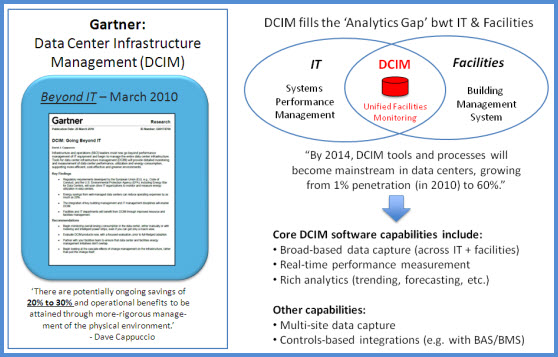We’re proud to announce Modius will be joining Intel at its Gartner Data Center Conference booth at the annual show, taking place Dec. 5-8 at Caesars Palace in Las Vegas.
Earlier this year, Modius and Intel announced their plans for integrating OpenData Enterprise Edition with Intel DCM to capture power and temperature data from a broad range of servers with Intel processors.
Intel DCM enhances our OpenData platform with increased visibility and analytics of server-level performance by providing thermal and energy intelligence from the CPU and power supply. This helps both IT and facility managers better understand and manage the power consumption at the rack and server levels, as well as the cooling and airflow distribution requirements of their computing sources.
Gartner show attendees will be able to experience first-hand how our OpenData® Enterprise Edition integrates Intel® Data Center Manager (Intel DCM) to capture and manage server-level power and thermal data. By combing server-level data with performance data captured from other infrastructure equipment (e.g. CRACs and Air Handlers), the OpenData system will allow data center managers to analyze many rack-level challenges in the data center, including cooling and airflow distribution—which can be impacted by system power density, variable system processing loads, asset turnover and malfunctioning or broken equipment.

The integration of Intel DCM data-capture capabilities directly into Modius OpenData enables a set of functionality not previously available before, including:
-
Device- and rack-level capacity analysis with real-time alarming for power deviations
-
Device- and rack-level temperature analysis with real-time alarming for temperature deviations
-
End-to-end visibility of the power chain from the UPS to individual servers
-
Floor-level cold spot and hot spot identification and remediation
The benefits to data center managers from this technology integration include:
-
Improved data center efficiency and lower power costs
-
Expanded data center capacity
-
Early warning of data center problems and potential outages
If you’re going to be in Vegas at the show, please stop by Intel’s booth (booth #J) and see us. We’d love to show you, firsthand, how OpenData Enterprise Edition with Intel DCM can help you better manage power and thermal management at the rack and server.

Donald Klein, VP Marketing & Business Development


 In the news recently, there has been a lot of discussion around a new category of software tools focusing on unified facilities and IT management in the data center. These tools have been labeled by Gartner as Data Center Infrastructure Management (DCIM), of which Modius OpenData is a leading example (according to Gartner).
In the news recently, there has been a lot of discussion around a new category of software tools focusing on unified facilities and IT management in the data center. These tools have been labeled by Gartner as Data Center Infrastructure Management (DCIM), of which Modius OpenData is a leading example (according to Gartner).